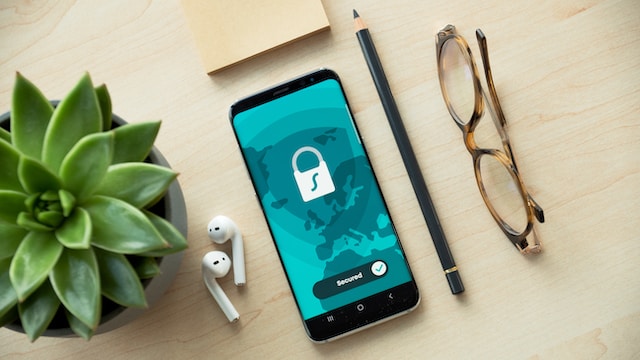More than 50,000 identity theft cases are reported each year in the US, and over 50,000 personal data breaches occur yearly. Total fraud and identity theft cases have nearly tripled over the last decade. It’s important to understand identity theft and the steps you can take to protect yourself from it. This article outlines the different types of identity theft and ways you can safeguard yourself and your family from this increasingly common crime.
Understanding identity theft
What is identity theft? In the simplest terms, identity theft occurs when someone steals your personal information and uses it without your permission. There are several ways identity theft can happen:
- Data breaches: This occurs when someone gains access to an organization’s confidential data files.
- Unsecure browsing: This can put your identity at risk if you share information on an unsecured website or a site that’s been compromised by hackers.
- Malware: This malicious software can be used to steal your data.
- Credit card theft: Common ways credit card theft occurs are through a data breach, physical theft, credit card skimmers, and online retail accounts where card information is stored.
- Mail theft: Bank and credit card statements and any other documents you send or receive through the postal system can be intercepted and used to gain access to your data.
- Phishing and SPAM attacks: Some scammers use email and text messages and other forms of electronic communication to steal your sensitive information. The message often looks like it’s coming from a reputable source and asks victims to open a malware-infected attachment or to visit a spoof website and give up one or more types of information.
- Wi-Fi hacking: If you use your computer or phone on a public network — such as an airport, department store, or coffee shop Wi-Fi — hackers may be able to eavesdrop on your connection. If you type in a password, bank account information, a credit card number, a Social Security number, or other sensitive information, a hacker can easily intercept and use it for their own purposes.
- Mobile phone theft: Smartphones are a treasure trove of information for identity thieves, especially if your apps allow you to log in automatically without a password or fingerprint. If someone manages to steal and unlock your phone, they may be able to gain access to the information found in your apps, as well as in your emails, text messages, notes, and more.
Depending on the type of theft that occurs and how the criminal uses your information, identity theft can result in immediate financial loss, damage to your credit, and emotional distress. It may take anywhere from less than a day to several months or even years to resolve the issue.
An ounce (or more) of identity theft prevention

Now that you know what identity theft is and how it can occur, you’ll want to take steps to prevent it from happening to you. There are several steps people can take to keep their identities safe.
Safeguard your personal information
Securely store and dispose of sensitive documents and avoid sharing personal details unnecessarily. If you must store sensitive information on paper, use a file cabinet with a lock. Your shredder is your best friend when it comes to disposing of sensitive documents you may get from your bank, credit card provider, or other entity that uses your personal data. You can opt out of paper documents and get your bank or credit card statements online through a secure website to avoid paper altogether.
Strengthen passwords and use authentication
Use strong, unique passwords and enable multi-factor authentication where possible. It’s tempting to use the same password across multiple platforms due to so much being done online these days, but if that password is compromised, think of all the personal data that could become available. Most websites allow you to choose a strong, unique password when you sign up. This password can be stored in your password manager, so you don’t have to remember them all. As long as you’re password-protecting your computer, this is a secure option to avoid identity theft.
Online safety
Avoid suspicious emails, links, and downloads. Phishers can spoof reputable companies and send you texts or emails asking for you to input personal information. Be very cautious when you get an email or text like this. Most companies would never ask you to submit your Social Security number online. If you’re not sure whether an email or text you received is legitimate, check it out with the company, and don’t click on any link sent to you this way. Regularly update your software and use reputable antivirus software to feel more secure.
Protect your personal devices
Secure your smartphone, tablet, and computer with passwords or biometric authentication, like a fingerprint. Turn off your Bluetooth when it’s not in use and switch off autocomplete on your mobile devices. Remember to shut down your devices at night and clear your browsing history on your mobile devices. Consider using security software to encrypt sensitive data.
Monitor financial accounts
Be sure to regularly review your bank statements, credit reports, and online accounts for any unauthorized activity. Notify your bank or financial institution of anything out of the ordinary or suspicious.
Use secure Wi-Fi
Make sure your home Wi-Fi is password protected and that all your devices are as well. Nobody should be able to log onto your home network unless they have the password. Make your Wi-Fi password something unique, and use two-factor authentication or biometric data for your devices whenever possible. Contact a phone and internet specialist to set up secure internet and phone lines if needed. Practicing online safety measures will go a long way toward protecting your identity.
Responding to identity theft

The actions you need to take, the length of recovery time, and the consequences of having your personal information stolen largely depend on what kind of identity theft you’ve experienced. In extreme cases, some people have spent more than six months resolving financial and credit problems associated with identity theft. Several steps can be taken to clean up the mess created by identity theft.
Place a fraud alert on your credit report
You have the right to place a temporary fraud alert on your credit report. With a fraud alert, lenders are asked to verify your identity before processing any applications for loans or credit cards. This can prevent criminals who’ve stolen your personal information from obtaining credit in your name and then tarnishing your credit score when they fail to repay. A temporary fraud alert lasts for one year.
You also have the right to request an extended fraud alert, which lasts seven years. This requires proof that you’ve made an identity theft complaint to law enforcement. You can also add a security freeze or credit lock at each of the credit bureaus to further restrict access to your credit reports. Security freezes are free, while credit locks are part of paid subscriptions.
Report identity theft
Use the Federal Trade Commission website IdentityTheft.org to file a theft report. The interactive form asks questions about your incident, guides you to appropriate resources based on your answers, and generates an Identity Theft Victim’s Complaint and Affidavit you can provide to law enforcement agencies and use to place an extended fraud alert on your credit reports.
Correct fraudulent information
Check your credit reports from all three national credit bureaus for signs of unfamiliar accounts or credit applications. Each account listed on your credit report should include contact information for the creditor that you can use to inquire about any suspicious entries. As appropriate, let the creditors know the activity was unauthorized and ask them to investigate.
Once you’ve alerted all creditors about potential fraud, be aware that you have the right to dispute credit report information with each credit bureau. By filing a dispute, you’re requesting to have unauthorized activities and accounts removed from your credit reports.
Keep monitoring your accounts
Continuously monitor credit reports and financial statements for any further signs of fraudulent activity. Notify financial institutions right away so they can open investigations into any potential fraud.
Emotional effects of identity theft
Identity theft is a complicated and personal problem. It’s normal for this crime to have an emotional impact on you and your family. As you take care of the paperwork, don’t forget to give yourself time to work on healing your and your family’s emotional wounds.
Few people are emotionally prepared for the impact of identity theft. Victims of identity theft may feel overwhelmed at times by the psychological pain of loss, helplessness, anger, isolation, betrayal, rage, and even embarrassment. This crime triggers deep fears regarding financial security, the safety of family members, and the ability to trust again. You might also have to deal with the fact that someone you know personally was involved in the theft.
Finally, you may feel frustrated by the very people you turn to for help. Identity theft is a difficult crime to solve, and the wheels of justice can be squeaky. Be patient with yourself and those who want to help. While it might take some time to straighten out the paper trail, it’s important for you to regain your emotional balance as quickly as possible. Don’t wait until you feel lost at the bottom of a pit to reach out for support.
Even if you don’t feel overwhelmed, talking to a trained professional who specializes in crime victims can be helpful. This professional could be a victim advocate, religious leader, or a licensed counselor, psychologist, or psychiatrist. Whatever path you choose, take time to get the support you need to get through a challenging situation.
Identity theft is a crime that can happen in a number of ways, but the most common type is data breaches. In this case, you have little control over your information being hijacked by someone with nefarious purposes. However, the other ways in which identity theft occurs — malware, credit card theft, phishing attacks, mail theft, and unsecured browsing — can be minimized by taking several critical steps to protect your identity:
- Safeguard your personal information
- Strengthen passwords and authentication
- Be cautious online
- Protect your personal devices
- Monitor financial accounts
- Use secure Wi-Fi
Understanding identity theft coverage as an endorsement of homeowners’ insurance
Some homeowners’ insurance policies may offer an optional endorsement or rider for identity theft coverage. This means that you can add identity theft protection to your existing home insurance policy for an additional premium. The coverage and benefits can vary depending on the insurance company, but it typically includes features like identity monitoring, fraud resolution assistance, and reimbursement for certain expenses related to identity theft.
Here’s how it works:
- Endorsement or rider: You can contact your homeowners’ insurance provider and inquire about adding identity theft coverage to your policy. This often comes at an extra cost, but it can be more convenient and potentially more cost-effective than purchasing a separate identity theft insurance policy.
- Coverage: The specifics of identity theft coverage can vary between insurance companies. Common coverage elements include expenses related to clearing your name and restoring your credit, such as legal fees, notary fees, and costs associated with re-establishing your identity. Some policies may also offer coverage for lost wages due to time taken off work to resolve identity theft issues.
- Identity monitoring: Many policies offer identity monitoring services, which can help detect early signs of identity theft by monitoring your personal information for unusual activity or breaches.
- Fraud resolution assistance: Insurance providers typically provide assistance in the event of identity theft. This may include connecting you with experts who can help with the recovery process, including contacting credit bureaus, creditors, and law enforcement.
- Limitations and deductibles: Like other insurance coverage, identity theft endorsements may have limitations, deductibles, and maximum coverage amounts. You should carefully review the terms and conditions of your policy to understand what is covered and any cost-sharing arrangements.
It’s important to contact your homeowners’ insurance provider and discuss the specifics of the identity theft endorsement they offer. You should also compare the cost and coverage with standalone identity theft insurance policies and consider your specific needs and risk factors.
Keep in mind that identity theft insurance, whether through a homeowners’ policy endorsement or a standalone policy, is not a guarantee that you won’t become a victim of identity theft. It is a financial safety net that can help you address the consequences of identity theft more effectively and reduce the financial burden associated with resolving such issues.
Taking these steps can significantly reduce the chances that you’ll be a victim of identity theft. If the unfortunate event that identity theft does happen to you, follow the above guidance on how to respond and make sure you take care of your emotional well-being in the process.




